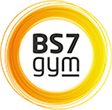6 July 2016
Gym Manager, Gary Cox, answers some questions often asked by BS7 members
What are the differences between running outdoors and on the treadmill?
Treadmills tend to be lower impact, meaning less stress on the joints. Also, treadmills will drag your strike foot backwards for you as the belt moves, however when running outdoors you must drive the leg through the extension phase yourself (more work). Another obvious point is treadmills only go in straight lines, in the real world we do not.
Are sports drinks beneficial for training in hot weather or is water sufficient?
Sports drinks do have their place but there must be a need within the body and a suitable product to meet the need. As we are considering hot weather here, we won’t think about carbohydrate or protein etc. instead the focus is on hydration. When it’s hot you can lose a lot of water through sweat and breathing, which can lead to impaired performance, particularly in endurance based activities, so water is essential. Using a sports drink also containing electrolytes will help replace those lost in sweat which may be beneficial in preventing deterioration of muscle function, cramp and improve hydration.
Are there any simple recovery strategies for a weekend warrior after a game?
Yes. I would suggest some form of active recovery; this is movement based activity of a low intensity after the game and on subsequent days. Refuelling the body as soon as possible after a game is vital and quality carbohydrate and protein are the focus along with addressing hydration. Contrast showers, where you switch between cold bursts and hot bursts several times can be quite effective in eliminating metabolites and promoting recovery. Finally, SMR techniques where you massage target muscles with tools such as a foam roller or ball can be very effective in removing knots, improving mobility and increasing blood flow to the muscle, which will promote better recovery.
How often should I include a recovery week in my training schedule?
This will vary from person to person depending on the type of training you are doing, intensity, volume and recovery strategies employed. However, generally speaking you should be looking at one down load week every four to six weeks of hard training.
Early morning run? Eat before or after?
As most of us have to fit training in around busy lives this really comes down to opportunity. Due to circadian rhythms, some people will naturally perform better in the early part of the day while others do better later. If your only option is early morning, then that’s when you run. I would generally advise eating to fuel the body prior to training, but if you’re already getting up at 6am to train, losing an hours sleep by getting up at 5am to eat may not be the answer. It is perfectly reasonable to go for a decent distance run prior to eating for most people, however you must ensure you have fuelled your body sufficiently the previous day and have a suitable post training meal as soon as you’re back.
Is running alone sufficient training for endurance racing?
In a nutshell, no, it is not really sufficient. Most people will have areas where their body is not performing as it should. This could be poor flexibility, abdominal weakness, weak glutes or a host of other issues. Any such issues must be addressed or else they will limit performance at best, or worse, lead to injury. Even if there are no imbalances, adding strength training to a programme will improve performance and make the body more robust, so helping to stave off injury. Plyometric training can enhance efficiency and running economy, making running at a given speed easier than before and so less tiring.

